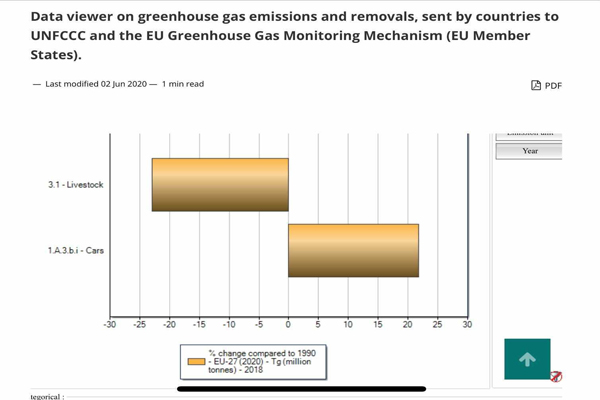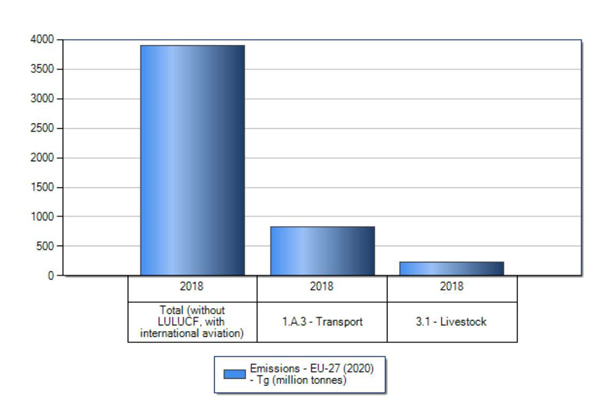THREAD: This is what PR looks like. The @guardian cites a @Greenpeace analysis to support an outrageous (and simply incorrect) message. This piece is not based on accurate scientific facts instead, it has a clear-cut agenda with a message to spread. 1/ 

PR has no place in journalism but here we are – again. Greenpeace, by their own account, is a non-profit NGO rooted in activism. Activism has a necessary place in society, but when it comes to the issue of climate change, science and emissions expertise must prevail. 2/
The article claims EU livestock are producing more greenhouse gases than all cars and vans within the union. Not only is this an apples-to-oranges comparison, but it unfairly and deliberately omits key data to skew favor one way while vilifying the other. 3/
Life cycle assessment (LCA) is a key point to understanding why there continues to be so much confusion around cars and cows. LCA refers to the environmental impacts of a product when considering ALL stages of the product. So, in other words, direct AND indirect emissions. 4/
With livestock this means – land use, on-farm activities, processing, transportation, packaging, etc – EVERYTHING. Here’s where the problem lies with the Greenpeace claims: The group used LCA for livestock but did not use the same method to calculate emissions for cars. 5/ 

Greenpeace uses conclusions from a 2012 Weiss and Leip paper, which focuses on the totality of EU livestock emissions, using LCA. However, the paper used 2004 data to come to their findings. Here’s that paper: sciencedirect.com/science/articl… 6/
To make their claims, Greenpeace took the 2004 emissions data from the paper cited and multiplied it by EU livestock numbers. A simple equation where their solution was *simply* to reduce the number of livestock by 50% and 75%. But it’s not so simple. 7/
Greenpeace only used direct emissions for cars, or tailpipe emissions. This completely omits the indirect impacts of individual vehicles such as the building of roads, production of metal, use of gas, etc. Not only did Greenpeace fail to use the same methodology… 8/
to compare the two sectors, but the way the numbers were crunched did not account for the mitigation and sustainability practices applied by European animal farmers since 2004, the year from which the data used by Greenpeace was sourced. 9/
Here’s the official European Environment Agency (EEA) comparison between livestock and transportation emissions at 6% and 20% and changes over time, respectively. A stark contrast from the incomplete Greenpeace numbers. 10/ 



Additionally, the Greenpeace calculation uses a carbon dioxide equivalent (CO2e), meaning it equates all GHGs to CO2. This is a problematic approach to measuring the global warming impact especially w/ methane, because it doesn’t take lifespan and warming impact into account. 11/
The @UCDavisCLEAR recently released a report which explores the standard equation for measuring GHGs (GWP, a CO2e) in comparison to a proposed equation (GWP*). I explain the difference in the thread below:
https://twitter.com/GHGGuru/status/130115040965909299312/
I publicly debunked the comparison used by Greenpeace about a decade ago. The flawed analogy comes from the 2006 @FAO report, “Livestock’s Long Shadow” and the authors admitted to the mistake of making the comparison. Here's some background:
archives.cjr.org/the_observator… 13/
archives.cjr.org/the_observator… 13/
We have to ask ourselves – why is a publication like the @Guardian publishing content by an activist group pushing a discredited comparison? It’s fundamentally dangerous as it distracts us from the REAL culprit: fossil fuels. For reference: theguardian.com/environment/20…
14/
14/
Here’s some more information on the topic of cars vs cows by @Reuters: news.trust.org/item/201809180… 15/
Check out a video about cars vs. cows that I’m featured in from the @DairyCares Cows and Climate series: 16/16
• • •
Missing some Tweet in this thread? You can try to
force a refresh




